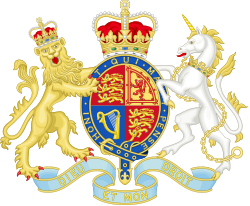History
The Supreme Court of Van Diemen's Land (as Tasmania was then known) was established by The Royal Letters Patent of 13 October 1823 and commenced activities on 10 May 1824. [2] The Court is the oldest Supreme Court in Australia and predates the Supreme Court of New South Wales, if only by a period of just ten days. The supreme courts of Tasmania and New South Wales were initiated through the New South Wales Act 1823, and this gave those courts jurisdiction over New Zealand. [3] Sir John Pedder, after whom Lake Pedder is named, was the first Chief Justice of the court.
The first counsel to appear before the Court was Joseph Tice Gellibrand, who was appointed Tasmania's first Attorney-General, and took his oaths on the first day of the new Court. The first case before the Court was the trial of William Tibbs, who was found guilty and sentenced for manslaughter, receiving 3 years transportation. [4]
Dorothy Shea, the court's librarian between 1988 and 2016, [5] discovered that the court had the original copies of a large amount of Tasmanian legislation, dating back to 1833. [6] Shea led the project to restore and relocate the legislation to the Tasmanian Archive and Heritage Office; the project was finished in just after Shea's death in 2024. [5] [6]
Jurisdiction
It has unlimited jurisdiction within the state in civil matters and hears the most serious criminal matters. It is around the middle of the Australian court hierarchy. The Supreme Court consists of a Trial Division (also known as Original Jurisdiction) and an Appeal Division (or Appellate Jurisdiction). [7] When sitting in its appellate jurisdiction in civil matters it is the "Full Court"; for criminal matters it is the "Tasmanian Court of Criminal Appeal". [8]
Appeals from the Appeal Division of the Court are to the High Court of Australia. It was previously possible to appeal decisions of the Court of Appeal or the Court of Criminal Appeal (both parts of the Appeal Division) to the Judicial Committee of the Privy Council in London, but this ceased in 1986 when the Parliament of Australia passed the Australia Act 1986 , which terminated all such appeals to the Privy Council from Australian courts, except for those cases pending at that time.
Civil matters involving consent orders, or for disputes involving less than $50,000, are dealt with by the Magistrates Court except in exceptional circumstances.
The Court receives appeals from Magistrate Courts in Tasmania in both criminal and civil matters. Committal proceedings, which are used in criminal matters to establish whether there is sufficient evidence against an accused person to warrant the time and expense of a trial, were abolished in Tasmania in 2000 with the amendment of the Justices Act 1959 (Tas). The Justices Act 1959 now provides that where there has been a plea of not guilty by an accused, there must be an order committing them for trial in the Supreme Court.
Unlike some other Australian states, Tasmania does not have an intermediate court division between the Supreme Court and the Magistrates Courts (such as a "District Court" or a "County Court"). [9]
This page is based on this
Wikipedia article Text is available under the
CC BY-SA 4.0 license; additional terms may apply.
Images, videos and audio are available under their respective licenses.





